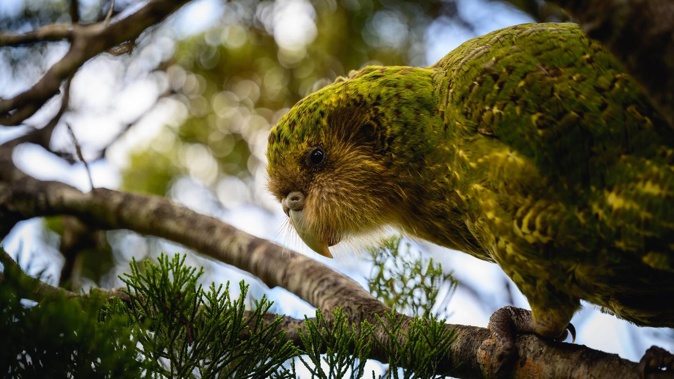
One of Waikato’s resident kākāpō has made an escape attempt from Sanctuary Mountain Maungatautari.
It is believed Tautahi, 4, who arrived in the region in September as part of a group of six, used a downed tree to boost himself over the fence and onto neighbouring farmland.
However, there is no reason for ruffled feathers: the flightless fugitive was safely returned to Maungatautari last week.
Tautahi is one of 10 kākāpō now living in Waikato as part of a habitat trial. All the birds wear backpack-style transmitters and GPS units that are regularly monitored by rangers, but there are some limitations to the technology.
This, combined with adverse weather and difficult terrain, prevented the team from pinpointing Tautahi for several days.
Department of Conservation kākāpō operations manager Deidre Vercoe said: “Once we saw he was definitively outside the perimeter, we acted quickly and were able to return him safely to the sanctuary.”
/cloudfront-ap-southeast-2.images.arcpublishing.com/nzme/MNU5MJ3OAJCUJME6SYB4V2GTZQ.jpg)
Kākāpō males Manawanui (pictured), Elwin, Kanawera, Tautahi, Taeatanga and Manaaki moved to Sanctuary Mountain Maungatautari in September. Photo / Danielle Zollickhofer
GPS data shows Tautahi spent time investigating the fence line, before going on a hīkoi (walk) towards a farm block on the southeast corner of the mountain where he was intercepted by a ranger team member.
Vercoe said while the departure from the sanctuary was not ideal, it was one of the expected challenges of the trial.
“Kākāpō have never lived in a fenced sanctuary before ... [They] are smart, determined and excellent climbers,” she said.
“The 2m-high, 47km-long fence underwent a modification ahead of the translocation to add a barrier to deter kākāpō from climbing it, however, as with any trial there is always an element of the unknown.”
Te Rūnanga o Ngāi Tahu Kākāpō species representative Tāne Davis said he was not surprised by the escape attempt.
“The manu (bird) will always challenge us ...They’ve spent their life on offshore islands with no fences, so it’s natural for them to be inquisitive.”
Sanctuary Mountain covers an area of 3400 ha, with 47km of predator-proof fence. Photo / Danielle Zollickhofer
Sanctuary Mountain Maungatautari general manager Helen Somerville said the sanctuary was going to make adjustments following the escape attempt.
“Our team will add additional vegetation clearances and increase the monitoring of Tautahi over the coming weeks to ensure he stays within the safety of the sanctuary.”
Tautahi, alongside Elwin, Kanawera, Manawanui, Taeatanga, Manaaki, Bunker, Ōtepoti, Motupōhue and Māhutonga, were transferred from three islands off the South Island.
The translocation is part of a historic trial to see whether the nocturnal parrots can thrive in a fenced sanctuary, because the predator-free islands are close to capacity.
Sanctuary Mountain was chosen because at 3400ha, it is the largest predator-fenced habitat in the country.
The first group of four kakapo was relocated in July as the second cohort of birds moved to the Waikato in September.
Overall, the 10 kākāpō are doing well in their new habitat, with all having passed recent health checks.
Vercoe said the feathered tentet had a period of settling in where they spent the first month or so exploring their new surroundings.
“Once they have the lay of the land, they tend to settle into their smaller ranges. Many of the others have come up to the fence and simply turned around again. So now we know we need to pay extra-close attention to the birds who spend more time investigating the fence.”
Stay up to date with the Waikato Herald
Get the latest Waikato headlines straight to your inbox Monday to Saturday. Register for free today - click here and choose Local News.
Take your Radio, Podcasts and Music with you

/cloudfront-ap-southeast-2.images.arcpublishing.com/nzme/BMFUKWORAFEX7NTLKSMDZUXEUE.JPG)








